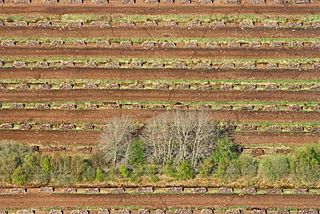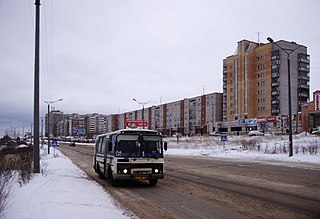
Kirovo-Chepetsk is a town in Kirov Oblast, Russia, located at the confluence of the Cheptsa and the Vyatka Rivers, 20 kilometers (12 mi) east of Kirov. Population: 80,921 (2010 Census); 90,303 (2002 Census); 92,382 (1989 Census).

Kirs is a town and the administrative center of Verkhnekamsky District in Kirov Oblast, Russia, located on the Kirs River near its confluence with the Vyatka, 281 kilometers (175 mi) northeast of Kirov, the administrative center of the oblast. Population: 10,420 (2010 Census); 11,786 (2002 Census); 14,200 (1989 Census).

Murashi is a town and the administrative center of Murashinsky District in Kirov Oblast, Russia, located 112 kilometers (70 mi) northwest of Kirov, the administrative center of the oblast, on the Kirov–Syktyvkar highway. Population: 6,750 (2010 Census); 7,650 (2002 Census); 10,059 (1989 Census).

Kiknursky District is an administrative and municipal district (raion), one of the thirty-nine in Kirov Oblast, Russia. It is located in the southwest of the oblast. The area of the district is 1,680 square kilometers (650 sq mi). Its administrative center is the urban locality of Kiknur. Population: 9,795 (2010 Census); 13,228 ; 16,347 (1989 Census). The population of Kiknur accounts for 50.7% of the district's total population.

Kilmezsky District is an administrative and municipal district (raion), one of the thirty-nine in Kirov Oblast, Russia. It is located in the southeast of the oblast. The area of the district is 3,106.4 square kilometers (1,199.4 sq mi). Its administrative center is the urban locality of Kilmez. Population: 13,086 (2010 Census); 16,132 ; 18,370 (1989 Census). The population of Kilmez accounts for 45.5% of the district's total population.

Kirovo-Chepetsky District is an administrative and municipal district (raion), one of the thirty-nine in Kirov Oblast, Russia. It is located in the center of the oblast. The area of the district is 2,210.27 square kilometers (853.39 sq mi). Its administrative center is the town of Kirovo-Chepetsk. Population: 21,317 (2010 Census); 22,193 ; 39,688 (1989 Census).

Kumyonsky District is an administrative and municipal district (raion), one of the thirty-nine in Kirov Oblast, Russia. It is located in the center of the oblast. The area of the district is 1,911 square kilometers (738 sq mi). Its administrative center is the urban locality of Kumyony. Population: 17,350 (2010 Census); 19,472 ; 21,445 (1989 Census). The population of Kumyony accounts for 27.8% of the district's total population.

Murashinsky District is an administrative and municipal district (raion), one of the thirty-nine in Kirov Oblast, Russia. It is located in the north of the oblast. The area of the district is 3,415.78 square kilometers (1,318.84 sq mi). Its administrative center is the town of Murashi. As of the 2010 Census, the total population of the district was 12,905, with the population of Murashi accounting for 52.3% of that number.

Nagorsky District is an administrative and municipal district (raion), one of the thirty-nine in Kirov Oblast, Russia. It is located in the north of the oblast. The area of the district is 7,236 square kilometers (2,794 sq mi). Its administrative center is the urban locality of Nagorsk. Population: 10,336 (2010 Census); 13,186 ; 16,577 (1989 Census). The population of Nagorsk accounts for 47.4% of the district's total population.

Nemsky District is an administrative and municipal district (raion), one of the thirty-nine in Kirov Oblast, Russia. It is located in the southeast of the oblast. The area of the district is 2,158 square kilometers (833 sq mi). Its administrative center is the urban locality of Nema. As of the 2010 Census, the total population of the district was 7,983, with the population of Nema accounting for 45.7% of that number.
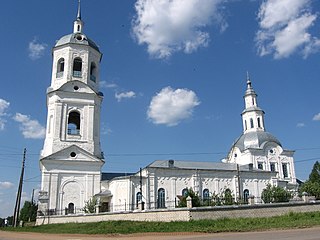
Orichevsky District is an administrative and municipal district (raion), one of the thirty-nine in Kirov Oblast, Russia. It is located in the center of the oblast. The area of the district is 2,352 square kilometers (908 sq mi). Its administrative center is the urban locality of Orichi. Population: 30,781 (2010 Census); 32,764 ; 36,425 (1989 Census). The population of Orichi accounts for 25.9% of the district's total population.

Pizhansky District is an administrative and municipal district (raion), one of the thirty-nine in Kirov Oblast, Russia. It is located in the southwest of the oblast. The area of the district is 1,160.2 square kilometers (448.0 sq mi). Its administrative center is the urban locality of Pizhanka. Population: 11,242 (2010 Census); 13,580 ; 15,220 (1989 Census). The population of Pizhanka accounts for 34.5% of the district's total population.

Podosinovsky District is an administrative and municipal district (raion), one of the thirty-nine in Kirov Oblast, Russia. It is located in the northwest of the oblast. The area of the district is 4,265 square kilometers (1,647 sq mi). Its administrative center is the urban locality of Podosinovets. Population: 17,009 (2010 Census); 21,649 ; 25,559 (1989 Census). The population of Podosinovets accounts for 23.7% of the district's total population.

Sanchursky District is an administrative and municipal district (raion), one of the thirty-nine in Kirov Oblast, Russia. It is located in the southwest of the oblast. The area of the district is 1,536 square kilometers (593 sq mi). Its administrative center is the urban locality of Sanchursk. Population: 10,080 (2010 Census); 14,063 ; 17,719 (1989 Census). The population of Sanchursk accounts for 46.9% of the district's total population.

Sovetsky District is an administrative and municipal district (raion), one of the thirty-nine in Kirov Oblast, Russia. It is located in the south of the oblast. The area of the district is 2,411 square kilometers (931 sq mi). Its administrative center is the town of Sovetsk. Population: 27,302 (2010 Census); 31,840 ; 35,368 (1989 Census). The population of Sovetsk accounts for 60.8% of the district's total population.

Sunsky District is an administrative and municipal district (raion), one of the thirty-nine in Kirov Oblast, Russia. It is located in the center of the oblast. The area of the district is 1,260 square kilometers (490 sq mi). Its administrative center is the urban locality of Suna. Population: 6,784 (2010 Census); 8,636 ; 10,150 (1989 Census). The population of Suna accounts for 32.4% of the district's total population.

Uninsky District is an administrative and municipal district (raion), one of the thirty-nine in Kirov Oblast, Russia. It is located in the southeast of the oblast. The area of the district is 2,130 square kilometers (820 sq mi). Its administrative center is the urban locality of Uni. Population: 9,178 (2010 Census); 11,179 ; 12,955 (1989 Census). The population of Uni accounts for 50.0% of the district's total population.

Urzhumsky District is an administrative and municipal district (raion), one of the thirty-nine in Kirov Oblast, Russia. It is located in the south of the oblast. The area of the district is 3,025 square kilometers (1,168 sq mi). Its administrative center is the town of Urzhum. Population: 27,075 (2010 Census); 33,959 ; 38,836 (1989 Census). The population of Urzhum accounts for 37.7% of the district's total population.
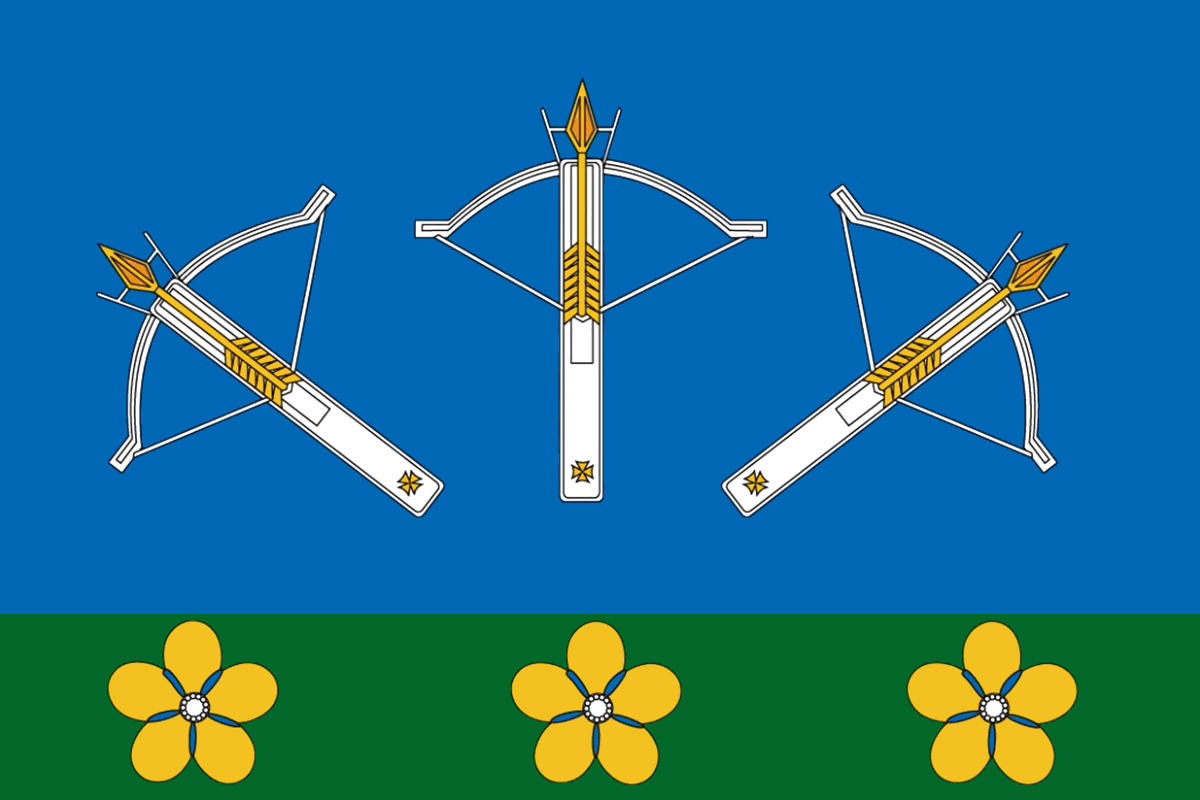
Pervomaysky is a closed urban locality in Kirov Oblast, Russia. Population: 6,147(2010 Census); 9,300.
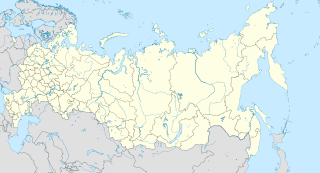
Arkul is an urban locality in Nolinsky District of Kirov Oblast, Russia. Population: 2,053 (2010 Census); 2,616 (2002 Census); 3,163 (1989 Census).






